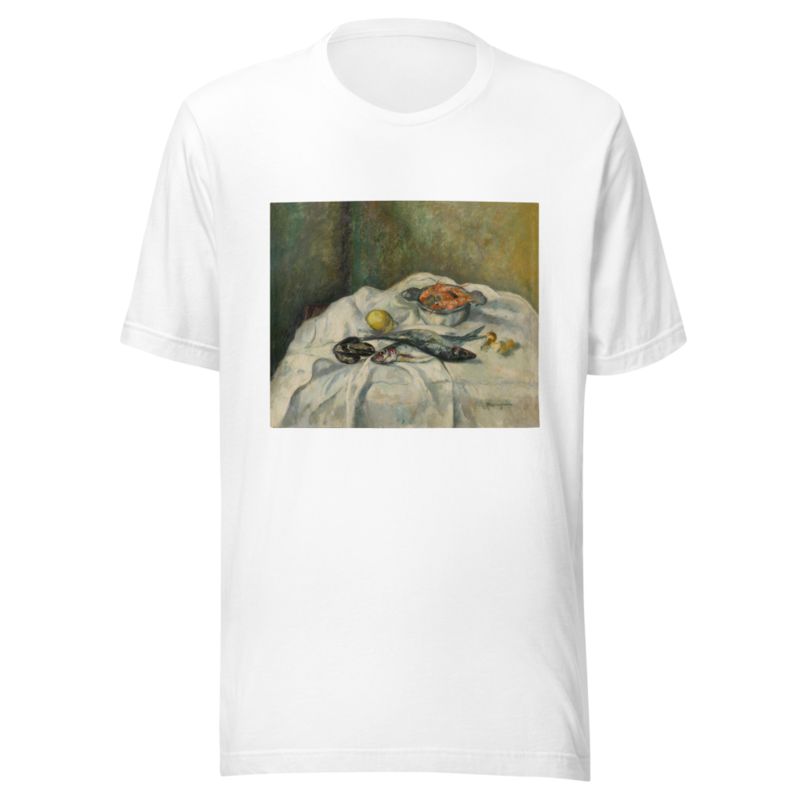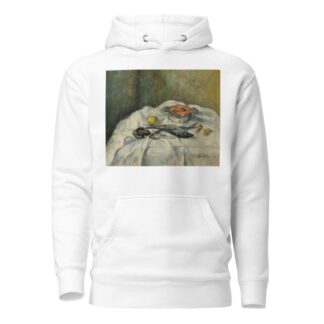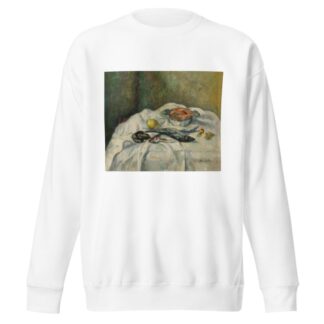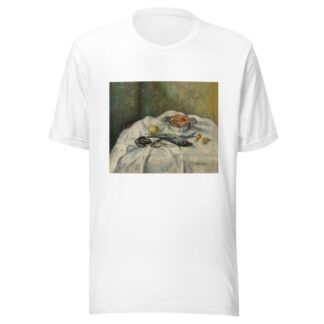Description
Harengs et crevettes by Henri Manguin printed on a T-Shirt
About the T-Shirt
Regular fit
Standard length, the fabric easily gives into movement
Casual wear
A classic, everyday option loved by our customers
Side-seamed
Constructed by sewing two parts together, creating a fitted look
The Unisex Staple T-Shirt feels soft and light with just the right amount of stretch. It’s comfortable and flattering for all. We can’t compliment this shirt enough–it’s one of our crowd favorites, and it’s sure to be your next favorite too!
- Solid colors are 100% Airlume combed and ring-spun cotton
- Ash color is 99% combed and ring-spun cotton, 1% polyester
- Heather colors are 52% combed and ring-spun cotton, 48% polyester
- Athletic and Black Heather are 90% combed and ring-spun cotton, 10% polyester
- Heather Prism colors are 99% combed and ring-spun cotton, 1% polyester
- Fabric weight: 4.2 oz./yd.² (142 g/m²)
- Pre-shrunk fabric
- 30 singles
- Side-seamed construction
- Tear-away label
- Shoulder-to-shoulder taping
- Blank product sourced from Nicaragua, Mexico, Honduras, or the US
Henri Manguin (1874-1949)
Henri Charles Manguin was a French painter, associated with the Fauves.
Manguin entered the École des Beaux-Arts to study under Gustave Moreau, as did Henri Matisse and Charles Camoin with whom he became close friends. Like them, Manguin made copies of Renaissance art in the Louvre.
Manguin was greatly influenced by Impressionism, as is seen in his use of bright pastel hues.
He married in 1899 and made numerous portraits of his wife, Jeanne, and their family. In 1902, Manguin had his first exhibition at the Salon des Indépendants and Salon d’Automne. Many of his paintings were of Mediterranean landscapes; and would soon represent the height of his career as a Fauve artist.
From 24 March to 30 April, the burgeoning of Fauvism was visible at the Indépendants, prior to the infamous Salon d’Automne exhibition of 1905 which historically marks the birth of the term Fauvism, after critic Louis Vauxcelles described their show of work with the phrase “Donatello chez les fauves” (“Donatello among the wild beasts”), contrasting the paintings with a Renaissance-style sculpture that shared the room with them.
At the 1905 Indépendants Manguin exhibited with Henri Matisse, Albert Marquet, Jean Puy, Othon Friesz, Raoul Dufy, Kees van Dongen, André Derain, Maurice de Vlaminck, Charles Camoin and Jean Metzinger. This exhibition was reviewed by Vauxcelles in Gil Blas on 4, 18 and 23 March 1905.
Matisse was in charge of the hanging committee, assisted by Manguin, Metzinger, Bonnard, Camoin, Laprade Luce, Marquet, Puy and Vallotton.
In 1920, Manguin exhibited at the Gallery Marcel Bernheim together with Ottmann, Tirman, Alexandre-Paul Canu and others. He traveled extensively with Albert Marquet throughout Southern Europe. In 1949, Manguin left Paris to settle in Saint-Tropez, where he died soon after, on 25 September 1949.






Reviews
There are no reviews yet.